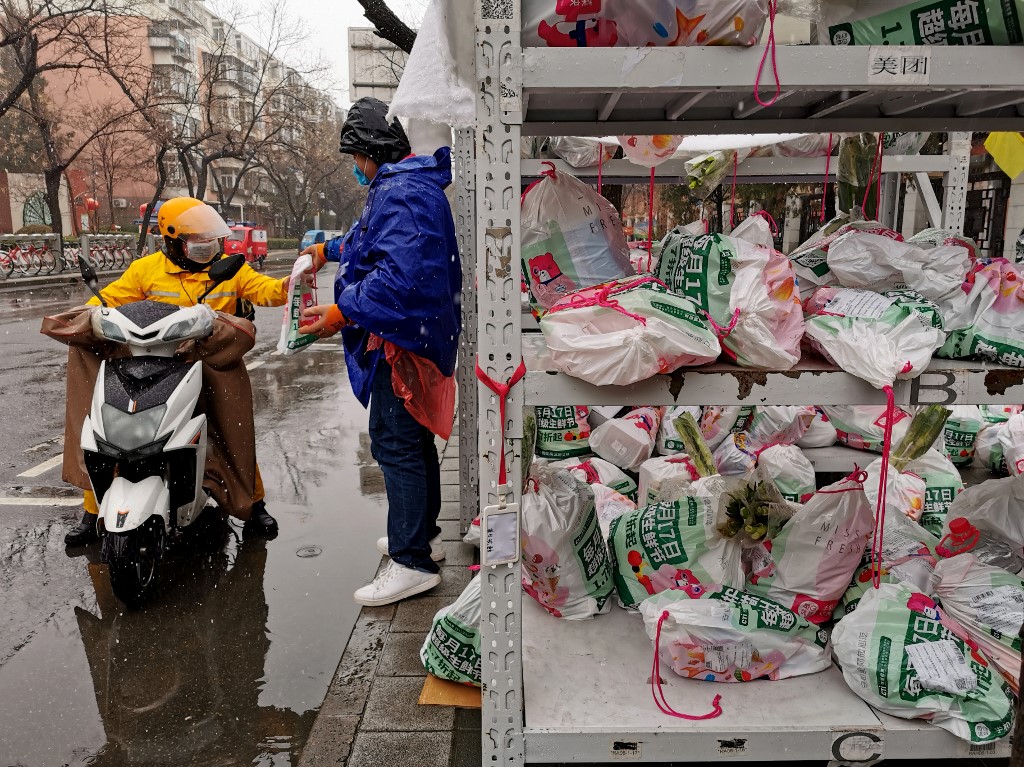(ATF) China is trying very hard to get its consumers buying again. And although the leadership has announced trillions of yuan in stimulus packages, calls are growing for the government to rethink its infrastructure plans and focus on consumers. The scale of fiscal and financial stimulus is the largest in China’s history and has reached more than 15% of GDP, Hexun reports.
Wanbo New Economic Research Institute disagrees with the CCP’s dogma about building infrastructure using the money raised by government bonds. “China’s high-speed railway covers more than 30,000 kilometers, while the highways cover more than 140,000 kilometers and the subway covers more than 5,000 kilometers, which is the most in the world. The is room for urban infrastructure. China’s real estate investment peak has passed, and the housing supply in many second- and third-tier cities has also been saturated,” the institute said in a report.
Instead they have argued for 1-trillion yuan (US$142 billion) worth of consumer vouchers to be given to low and middle-income households – so the money can subsidize rents, encourage the uptake of 5G internet and new energy vehicles.
Consumption coupons in Wuhan
Officials in Wuhan, the city in central Hubei province that was ravaged by the frightening coronavirus outbreak, plan to issue coupons to all residents. The municipal government will issue 500 million yuan (about $71 million) of ‘Wuhan Consumption Coupons’ from April 19 to July 31, according to a report by the Securities Times on Thursday. These coupons will allow people to get food and drinks, as well as purchase items at shopping malls, supermarkets and convenience stores. They will can also be used for outlays related to sport and tourism.
Special consumption coupons worth about 18 million yuan ($2.56 million) will be set up and distributed to low-income residents, the destitute and documented poor, the report said.
The government plan includes 7G infrastructure projects, Ultra-High Voltage (UHV) power transmission, intercity high-speed railways and urban rail lines, new energy vehicle charging stations, big data centers, artificial intelligence, industrial Internet and other things. But Wanbo argues that UHV and intercity infrastructure such as high-speed railways and urban rail is actually “old” infrastructure that has been going on for many years, and there is room for improvement. 5G base stations, new energy vehicle charging stations will be key new infrastructure in the future, but only 100 billion yuan has been allocated in stimulus projects so far.
Huawei is also entering the energy charging field. The Shenzhen-based telecom giant has said that it will release a new HiCharger DC Fast Charging Module next week. This is being promoted as a “new energy charging infrastructure solution” which it will push out with help from state outlets such as the State Grid in Beijing, Star Charging in Changzhou, South Grid Electric in Shenzhen.
It coincides with the state’s promotion of electric vehicles and production of electric cars by Tesla, which has a big factory in Shanghai. Tesla announced on Thursday that it is opening a flagship story – a T-mall – that will focus on accessories, after-sales service and car service.
CCTV has reported that the state has been encouraging the expansion of online entrepreneurship and employment since March in a bid to alleviate poverty and help farmers and agricultural production to recover from the coronavirus-caused recession. This has sped up the development of new products in the online market, and the number of online stores and sales of new products over the Net has soared. No actual figures were given but state media outlets said this has been significant.
Guizhou Institute of Standardization’s Coding Department has been busy every day, and there are a lot of people coming to the province to register new product barcodes.
The QR code is the “identity card” for commodities. In Guizhou, which is a rural and mountainous area, over half the new registrations in March were teas produced by local growers who want to sell their product on the domestic market or to buyers overseas.
Taobao stores booming
CCTV hopes that as agricultural products are sent to supermarkets, more and more people will also choose to sell via their own stores online. Data from Alibaba’s e-commerce platform shows that in the first quarter of this year, an average of 30,000 people opened Taobao stores per day.
With shops opening online, there has also been a substantial increase over the past three months in the number of sellers broadcasting live online – a kind of shopping TV. According to data from Kuaishou, the number of live broadcast e-commerce players in March exceeded 1 million, an increase of nearly 300% compared with February, and the turnover exceeded 10 billion yuan, an increase of more than 200% compared with February. This had led to a fast recovery in the apparel and beauty sectors, it said.
In terms of commodity consumption, data from multiple home appliance business platforms shows varying degrees of economic recovery. In March, Suning’s online and offline omni-channel orders increased by 64.9% month-on-month, and home appliance and home logistics distribution orders increased by 243% month-on-month, and is now close to the same period last year.
JD.com’s sales of fresh products, medicines and daily necessities rose substantially over the same period of last year. In March, the sales volume of furniture and automotive supplies increased by nearly 200% compared with February, and the growth of home textiles and outdoor sport products more than doubled.
In terms of logistics, data from Cainiao Network shows that China’s e-commerce logistics has recovered significantly. In March, the number of parcels delivered by multiple express delivery companies doubled from February. At present, more than 200 million parcels are transferred every day across the entire network, which has recovered to normal levels and now is the same as in previous years.
























